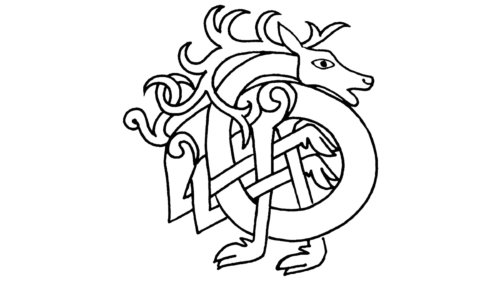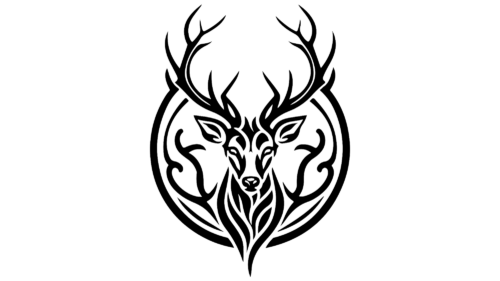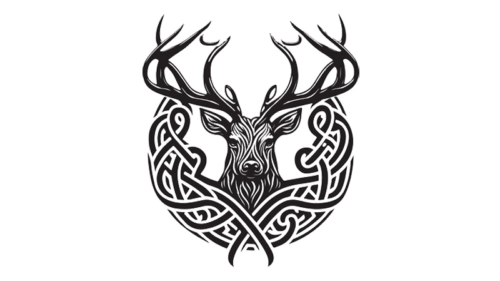Celtic symbols, with their intricate designs and deep meanings, have fascinated people for centuries. These symbols, often found in the art and artifacts of the ancient Celts, embody a variety of themes ranging from nature and spirituality to warfare. Among these symbols, the Triskelion and the Celtic Cross are particularly notable. The Triskelion, with its three spiraling arms, represents motion, progress, and competition, while the Celtic Cross, combining a traditional Christian cross with a circle, symbolizes the fusion of worldly and spiritual beliefs. These symbols, however, are just the tip of the iceberg in the rich tapestry of Celtic iconography.
The Celtic Hare and Snake are two more symbols steeped in meaning and tradition within Celtic culture. The Hare, known for its vigor and swiftness, is often associated with rebirth, fertility, and the awakening of new life in spring. This symbol captures the essence of the Celts’ deep connection with the cycles of nature and the earth’s renewal. On the other hand, the Snake, with its ability to shed its skin, represents transformation, healing, and the cycle of life, death, and rebirth. Both the Hare and the Snake, like the Deer, reflect the Celts’ reverence for the natural world and their belief in the interconnectedness of all living things. These symbols, each with their unique attributes and meanings, contribute to the rich mosaic of Celtic mythology and art, continuing to intrigue and inspire people across the world.
The Celtic Deer is a particularly captivating symbol within this tradition. Unlike the more widely recognized Celtic knots and crosses, the Deer carries a unique blend of meanings. It is often associated with aspects of humanity such as intuition, gentleness, and the feminine side of nature. The Deer is revered for its connection to the forest and the earth, making it a symbol of natural beauty and harmony.
In Celtic mythology and folklore, the Deer is frequently seen as a messenger of the otherworld, guiding souls and carrying messages between the spiritual and the mortal realms. It’s also linked with the Celtic god Cernunnos, known as the ‘Lord of the Wild Things,’ who is often depicted with antlers. This connection highlights the Deer’s role as a symbol of sovereignty and the cycle of life and death in nature.
Characteristics and Significance of the Celtic Deer
- Symbolism: The Deer in Celtic culture is a potent symbol of gentleness, grace, and the untamed wild. It represents the ability to navigate through life with sensitivity and intuition.
- Cultural Relevance: Historically, the Deer was central to Celtic daily life and spirituality. It was respected as a vital source of sustenance and as a spiritual guide in Celtic rituals and storytelling.
- Artistic Representations: In Celtic art, the Deer is often depicted with elaborate antlers, sometimes intertwined with Celtic knots, symbolizing the interconnectedness of all life forms.
An interesting fact about the Celtic Deer is its depiction in the famous Gundestrup Cauldron, a silver vessel believed to be of Celtic origin. This artifact features a detailed representation of a deity accompanied by a stag, further emphasizing the Deer’s spiritual significance.
In modern times, the Celtic Deer continues to be a popular motif in art, jewelry, and tattoos. It serves as a reminder of our connection to nature and our inner spirituality. As an emblem of peacefulness and natural beauty, it resonates deeply with those who value the ancient wisdom of the Celts.
The Enduring Legacy of Celtic Symbols
The importance of Celtic symbols, including the Deer, lies not only in their historical context but also in their enduring appeal in contemporary culture. These symbols offer a window into the beliefs and values of the ancient Celts, providing insights into a civilization that deeply respected the natural world and the mystical forces that govern it. The continued fascination with Celtic symbols reflects a universal longing for connection with our ancestral roots and a deeper understanding of the world around us.
In conclusion, Celtic symbols, particularly the Deer, offer a rich tapestry of meaning and significance. They are not just relics of the past but living symbols that continue to inspire and guide us in the present. As we delve deeper into the meanings and stories behind these ancient icons, we find timeless wisdom that is as relevant today as it was thousands of years ago.
The Deer Tattoo
The Celtic Deer, revered for its deep symbolism in ancient Celtic culture, has found a new expression in the modern world as a popular tattoo design. The choice of a Celtic Deer tattoo often reflects a personal connection to the characteristics it embodies – intuition, gentleness, and a profound bond with nature. These tattoos are not just decorative; they are a personal emblem of one’s values and beliefs, often signifying a respect for the natural world and a desire for spiritual growth.
In the art of tattooing, the Celtic Deer is frequently combined with traditional Celtic knots and spirals. This fusion represents the interconnectedness of life and the cyclic nature of the universe. The intricate patterns of the knots and the graceful form of the Deer create a visually striking design that resonates with both aesthetic appeal and symbolic depth. People often choose this tattoo for its aesthetic elegance and the way it seamlessly blends artistry with spirituality.
Moreover, the Celtic Deer tattoo can vary in design, from simple and elegant outlines to more complex compositions featuring lush landscapes or mystical elements. Some people opt for a more realistic portrayal of the Deer, while others prefer a stylized version integrated with Celtic patterns. Regardless of the design, these tattoos are a powerful way to carry a piece of Celtic heritage and its timeless wisdom. They serve as a constant reminder of the wearer’s connection to the ancient symbols and the values they represent, making the Celtic Deer tattoo a deeply personal and meaningful choice.









